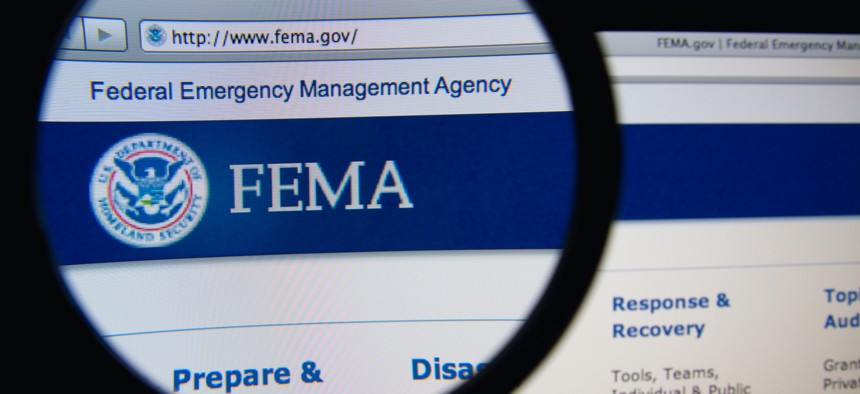FEMA Wants a New Way to Verify Survivors After Disasters

Gil C/Shutterstock.com
The new system will need to handle up to 750,000 cases at the same time to ensure survivors get what they need while fraudsters get shut out.
In the wake of a disaster, no aid worker wants to challenge people’s rights to government assistance. That said, fraud abounds during these times and federal programs need to ensure that resources go to those who truly need them.
The Federal Emergency Management Agency has been using residency information to verify survivors after disasters strike but is looking for a solution that includes many more data points. The agency announced Wednesday a forthcoming solicitation for an individual identity verification and authentication support service that can quickly verify a person’s identity across a number of factors.
The new system will need to include a one-time password for the beneficiary, as well as verification of the person’s identity, residence—including whether they own or rent—insurance, vehicle and demographic information,” according to a draft performance work statement. That verification process should include ensuring each identifying data point exists and is unique to that individual—e.g., the Social Security number isn’t associated with a deceased person.
The system needs to be able to handle 750,000 concurrent users and process 25,000 transaction per hour, the solicitation states. At the same time, it needs to balance speed and accuracy.
“Outcome results, either pass/fail with reason codes, or equivalent system, must be the highest possible [assurance level] for a victim to be granted service, but the fastest obtainable for FEMA to make a decision to grant services,” the document states.
That said, the “services are expected to provide near-perfect performance,” including being able to verify a person’s identity with 99 percent accuracy and authenticate that person in the future at a 95 percent accuracy rate.
On the technical side, contracting officials said commercial-off-the-shelf tools are preferred over custom applications.
The contract will carry a one-year base period starting March 30, with four one-year add-on options.
The full solicitation is expected to drop Nov. 1, with bids due by Nov. 15.
NEXT STORY: FCW Insider: Oct. 17



